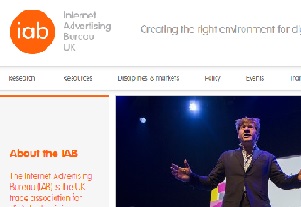Why publishers no longer need to worry about ad blockers
 Ad blocking was labelled as an existential threat to ad-supported digital content by some (including us on occasion), but its anticipated growth has failed to materialise and digital publishers are breathing a sigh of relief.
Ad blocking was labelled as an existential threat to ad-supported digital content by some (including us on occasion), but its anticipated growth has failed to materialise and digital publishers are breathing a sigh of relief.
According to the Internet Advertising Bureau UK, the proportion of British adults using ad blocking software online in February was 22.1%.
The figure is less than half-a-percent more than in the same month last year and shows growth almost grinding to a halt. In February 2016, year-on-year growth of those using ad blockers stood at around six percent.
In reality, the IAB UK said, ad blocking levels may actually be lower than 22%. Nearly a fifth of those claiming to currently use an ad blocker cited their anti-virus software, it said, or couldn’t identify using a genuine ad blocker. The real number, it added, could be as low as 18%.
The latest figures also show that 21% of those who originally downloaded ad blockers don’t currently use them and, aside from switching to a new device (24%), the reason most (also 24%) gave for turning off the technology was not being able to access some content with the blocker installed.
Jon Mew, CEO of IAB UK, attributed the plateauing of those who use ad blockers, dually, to actions taken by publishers and a realisation amongst the public that advertising helps pay for content.
“The continued rise in ad blocking that some predicted simply hasn’t materialised,” said Mew.
“A key reason is publishers denying access to content to ad blockers which, in effect, has created that ‘lightbulb’ moment for people who realise that they cannot access free content without seeing the advertising that funds it.
“The industry has worked hard on promoting this ‘value exchange’ and it’s paying off.”
Fightback
So, what did the industry do?
Some methods employed by publishers to combat ad blocking (and nicely detailed by eConsultancy) include GQ using a pop up to either encourage a reader to disable their ad-blocker or to read an ad-free version for a small payment.
Forbes offers readers using ad blockers an ‘ad-light’ version if they disabled the technology, while the Telegraph uses detection of ad blocker use as an opportunity to offer a subscription. Hulu, on the other hand, is amongst several sites to spell out to readers how ads are used by those who publish free content.
These solutions had a common thread of trying to engage with readers in one way or another, but some publishers also took a direct route and attempted to block the blockers. As consumer take-up of ad-blocking tools grew, media companies started experimenting with various technologies to limit the impact of ad-blocking on their businesses.
According to the Wall Street Journal, a handful of technology companies – including PageFair, Sourcepoint, Secret Media and Admiral – quickly sprang up in the hope of cashing in on the situation by selling software designed to counteract the effects of ad-blocking.
And advertising still grows…
Within the whole ad blocking debate, a significant area of concern was the speed at which take-up of ad-blocking technologies was happening on mobile devices.
But a year after those fears were first raised, the IAB UK was hailing a breakthrough moment as advertising budgets dedicated to mobile outstripped those for desktops for the first time.
If ad blocking impacted mobile advertising, it wasn’t showing. And digital advertising continued to grow from strength to strength.
Changing direction
In a neat coincidence last week, and a day after the IAB UK made its announcement about ad blocking not growing anymore, a leading ad-blocking software firm rebranded into an ad service. Israeli firm Shine, newly rebranded as Rainbow, now aims to offer “a better ad experience for consumers”.
The new system will now see ad agencies send ads to the Rainbow technology to be verified. The service will be free to publishers and consumers and will not charge advertisers to validate ads.
So, publishers no longer need to fret about ad-blockers and the technology suppliers are working with the ad suppliers now… how’s that for a turnaround?